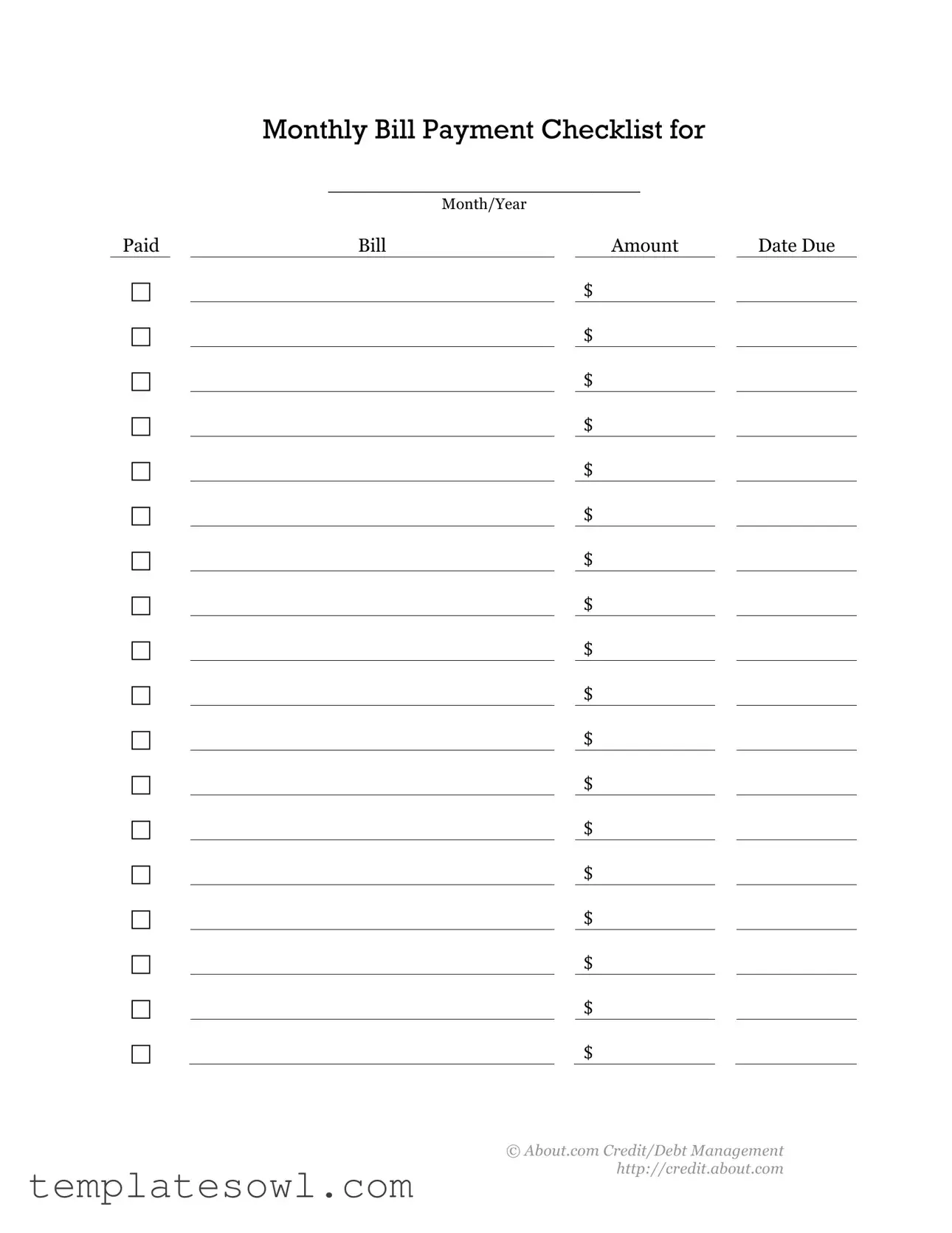Completing the Bill Payment Checklist form accurately is crucial for maintaining financial organization. One common mistake occurs when individuals forget to include the month and year at the top of the form. This detail is essential for tracking payments and identifying any recurring bills over different periods.
Another frequent error involves overlooking the bill amounts. Individuals may leave this section blank or input incorrect figures. Without proper amounts, it becomes difficult to gauge total expenses or ensure that enough funds are available for payment.
In addition to the bill amounts, the due dates need careful attention. Some people mistakenly enter incorrect dates or neglect to fill them out completely. Missing due dates can lead to late fees, increased interest, or a negative impact on credit scores.
A third mistake arises in the payment confirmation section. Individuals may not check the payment box after making a payment. This can create confusion later, as it becomes challenging to remember which bills have been paid and which remain outstanding.
Moreover, some users fail to keep track of multiple payments due for the same month. Neglecting to list all bills can lead to oversights and missed payments. Every outstanding bill should be accounted for to maintain a clear picture of financial obligations.
Mismanagement of the overall layout can also contribute to errors. Individuals sometimes fill out the form hastily, leading to illegible handwriting or a disorganized presentation of information. This lack of clarity may cause misunderstandings about which bills correspond to which amounts.
The use of abbreviations can complicate matters as well. While short forms may save space, they often result in confusion. A clear description for each bill is always preferable to ensure quick recognition and response.
Additionally, failing to review the completed checklist before submission may lead to missed mistakes. Taking a moment to double-check all entries can prevent easily avoidable errors, such as incorrect amounts or due dates.
Finally, not keeping a copy of the filled-out checklist can pose challenges in the future. Individuals should maintain a personal record, as having a reference is beneficial for tracking payment histories and supporting budgeting efforts.

